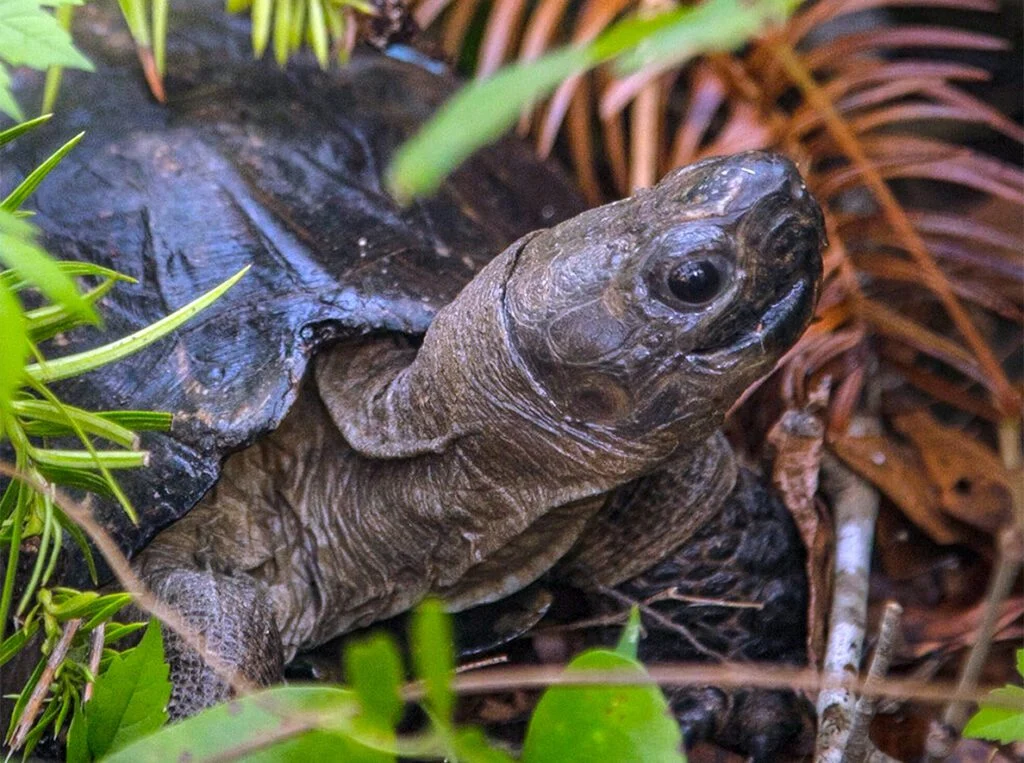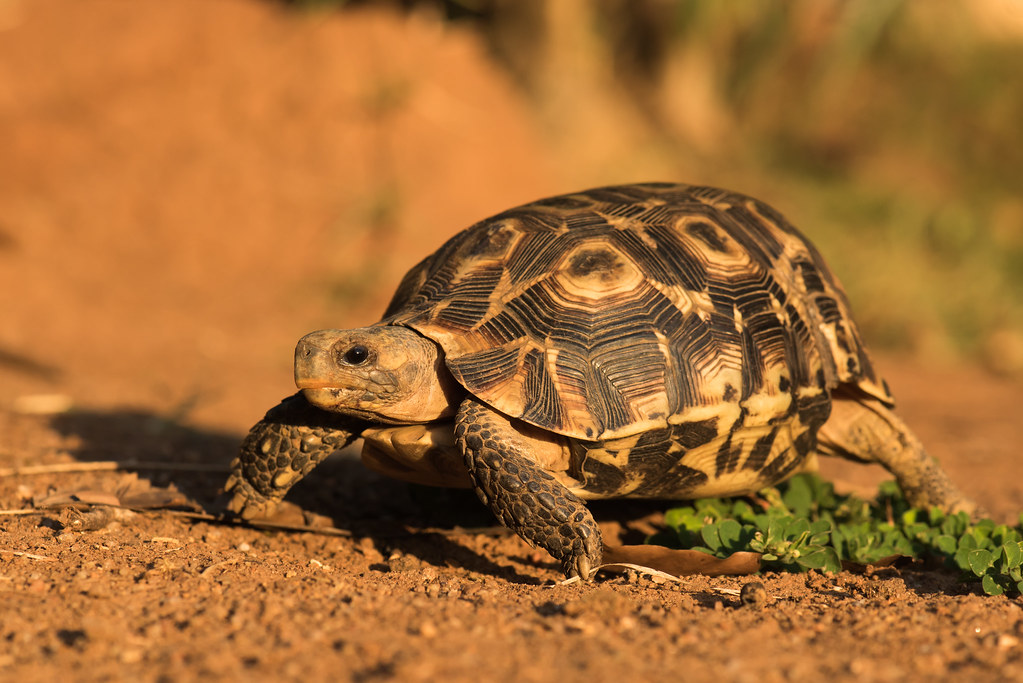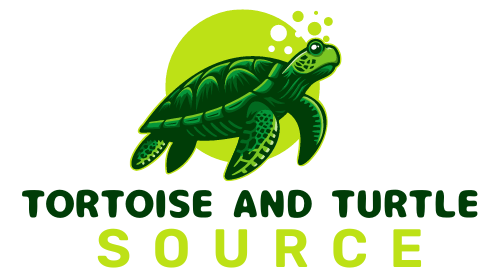Introduction
Turtles, an ancient and diverse group of reptiles, have been gracing our planet for over 200 million years. These fascinating creatures come in a wide variety of shapes, sizes, and habitats. However, out of the approximately 356 turtle species that exist today, many are considered rare and are teetering on the brink of extinction. Understanding and protecting these rare turtle breeds is crucial for maintaining biodiversity and ecological balance.
Threats to Rare Turtles
Rare turtle breeds face numerous threats that put their survival at risk.
Habitat Loss:
One of the most significant threats to turtles is habitat loss due to human development. Deforestation and urbanization destroy the natural habitats turtles rely on for survival. According to National Geographic, extensive deforestation has drastically reduced the living spaces available for many species.
Illegal Pet Trade:
The illegal pet trade poses another severe threat to rare turtles. TRAFFIC, an organization monitoring wildlife trade, reports that illegal wildlife trade is a significant driver of turtle population declines. Many turtles are captured and sold as exotic pets, leading to reduced wild populations.
Climate Change:
Climate change also impacts turtle populations. NASA highlights how changing temperatures can affect turtles’ nesting sites, alter sex ratios in hatchlings, and disrupt their migratory patterns.
Predators:
Natural and invasive predators also threaten turtles. Invasive species, such as certain types of fish and mammals, prey on turtle eggs and young turtles, significantly reducing their chances of reaching adulthood.
Highlighting Some Rare Turtle Breeds
1. Arakan Forest Turtle (Southeast Asia):

The Arakan Forest Turtle, also known as Heosemys depressa, is a fascinating and critically endangered species native to the dense forests of Myanmar. This elusive turtle was once presumed extinct until a remarkable rediscovery in 1994 brought it back into the spotlight. Found primarily in the Arakan Hills of western Myanmar, this species is characterized by its distinctive shell pattern and inherently shy nature, making it a unique subject of interest for herpetologists and conservationists alike.
One of the most striking features of the Arakan Forest Turtle is its shell, which exhibits a high-domed carapace with a unique, dark brown pattern adorned with intricate yellow lines. This remarkable shell not only serves as protection but also camouflages the turtle within its forest habitat, helping it evade predators. The turtle’s plastron, or underside, is usually a lighter yellowish-brown, providing a stark contrast to its carapace.
In addition to its captivating appearance, the Arakan Forest Turtle has several behavioural traits that intrigue researchers. Known for its reclusive and shy nature, this turtle prefers to remain hidden under the dense forest foliage, making it challenging to study in the wild. It is primarily terrestrial, spending most of its time on land rather than in water, which is somewhat unusual for a turtle. This behaviour is likely an adaptation to its forested environment, where it forages for a diet consisting of various plant materials, fruits, and small invertebrates.
The rediscovery of the Arakan Forest Turtle in 1994 was a significant milestone for conservationists, as it provided a renewed opportunity to study and protect this rare species. However, the Arakan Forest Turtle continues to face severe threats, primarily from habitat destruction and illegal wildlife trade. Deforestation for agriculture and logging in Myanmar has led to a significant loss of its natural habitat, putting immense pressure on the remaining populations. Additionally, the illegal pet trade poses a serious threat, as these turtles are often captured and sold in exotic pet markets, further diminishing their numbers in the wild.
Conservation efforts are crucial to the survival of the Arakan Forest Turtle. Organizations and researchers are working tirelessly to protect its habitat, enforce anti-poaching laws, and raise awareness about the importance of preserving this unique species. Captive breeding programs have also been initiated to help boost the population and potentially reintroduce individuals into their natural habitats.
In conclusion, the Arakan Forest Turtle’s story is a poignant reminder of the delicate balance of our ecosystems and the urgent need to protect endangered species. Its unique characteristics and the challenges it faces highlight the importance of conservation efforts in ensuring that such rare and magnificent creatures continue to thrive in the wild.
2. Bog Turtle: A Tiny Gem of North America’s Wetlands

Why are Bog Turtles Endangered?
Bog Turtles (Glyptemys muhlenbergii) are one of the most endangered turtle species in North America, facing a multitude of threats that have drastically reduced their populations. The primary reason for their endangered status is habitat loss. Wetlands, the natural habitat of Bog Turtles, are being destroyed or altered due to agricultural development, urbanization, and drainage for construction. Additionally, illegal poaching for the pet trade has significantly impacted their numbers, as these turtles are highly sought after for their small size and distinctive appearance. The invasion of non-native plant species, which alters their habitat, further exacerbates the challenges faced by Bog Turtles.
Bog Turtle Habitat
Bog Turtles thrive in wetland habitats, particularly in open, sunny areas with a mix of shallow water, soft muddy bottoms, and grassy or sedge-dominated vegetation. These habitats are typically found in the eastern United States, stretching from New York to Georgia. The turtles depend on these wetlands for foraging, nesting, and hibernation. Unfortunately, the fragmentation and destruction of wetlands due to human activities have severely limited the available habitat for Bog Turtles.
Bog Turtle Size
Bog Turtles are the smallest turtles in North America, with adults typically measuring only about 3 to 4 inches (7.6 to 10.2 cm) in length. This diminutive size, combined with their dark brown to black shells and distinctive orange or yellow patches on either side of their necks, makes them easily recognizable yet also vulnerable to predators and habitat changes.
Bog Turtle Bite
While Bog Turtles are generally not aggressive, they can bite if they feel threatened. However, due to their small size, their bite is not harmful to humans. It’s important to handle these turtles with care and respect to avoid causing them stress or injury.
How Many Bog Turtles Are Left?
Estimating the exact number of Bog Turtles left in the wild is challenging due to their secretive nature and fragmented populations. However, it is believed that only a few thousand individuals remain in the wild, with many populations containing fewer than 50 turtles. Conservation efforts are critical to preventing their extinction and ensuring the survival of this rare species.
Bog Turtle Lifespan
Bog Turtles have relatively long lifespans for their size, with individuals capable of living up to 30 years or more in the wild. However, their longevity is heavily dependent on the availability of suitable habitat and the absence of significant threats from predators and human activities.
Bog Turtle Diet
Bog Turtles are omnivores with a varied diet that includes a mix of plant and animal matter. Their diet typically consists of insects, worms, snails, small crustaceans, and a variety of plant materials such as seeds, berries, and leaves. This diverse diet helps them thrive in their wetland habitats, where food sources can vary seasonally.
In conclusion, the Bog Turtle’s endangered status highlights the urgent need for conservation efforts to protect and restore their wetland habitats. By addressing the threats they face and promoting awareness about their plight, we can help ensure the survival of these tiny yet remarkable creatures for future generations to appreciate and admire.
3. Plowshare Tortoise: Madagascar’s Critically Endangered Treasure

The Plowshare Tortoise, native to Madagascar, is critically endangered due to habitat destruction and poaching. Its name comes from the unique shape of its shell, which resembles a plowshare. Conservationists are working tirelessly to protect this species from extinction.
Plowshare Tortoise Madagascar Price
The Plowshare Tortoise (Astrochelys yniphora), also known as the Angonoka Tortoise, is one of the world’s most endangered and expensive tortoises, often fetching exorbitant prices on the illegal wildlife market. Due to its critically endangered status and the high demand among exotic pet collectors, individuals can be sold for tens of thousands of dollars, contributing significantly to its risk of extinction.
Plowshare Tortoise Madagascar Care
Caring for Plowshare Tortoises requires specialized knowledge and resources. These tortoises need a habitat that mimics their natural environment, with ample space to roam and a diet consisting of a variety of leafy greens, vegetables, and fruits. They also require specific temperature and humidity levels to thrive. Given their critically endangered status, it is essential that Plowshare Tortoises are cared for within regulated conservation programs or by professionals dedicated to their preservation.
Ploughshare Tortoise Traits for Survival
The Ploughshare Tortoise has several unique traits that aid its survival. Its most distinctive feature is its high-domed shell with a pronounced, plow-like extension at the front, which gives it its name. This shell not only offers protection from predators but also helps the tortoise navigate through dense underbrush. Additionally, these tortoises have strong, sturdy legs adapted for traversing their rugged habitat.
Plowshare Tortoise Madagascar Size
Adult Plowshare Tortoises are relatively large, with males reaching up to 17 inches (43 cm) in length and weighing around 35 pounds (16 kg). Females are slightly smaller, typically growing up to 14 inches (35 cm) in length. Their impressive size, combined with their unique shell, makes them a striking species.
Ploughshare Tortoise Habitat
The natural habitat of the Ploughshare Tortoise is the dry, deciduous forests of the Baly Bay region in northwestern Madagascar. These forests provide the tortoises with the necessary resources for survival, including food, shelter, and suitable nesting sites. Unfortunately, habitat destruction due to agricultural expansion and illegal logging poses a severe threat to their existence.
Conservation Efforts
Conservation organizations are working tirelessly to protect the Plowshare Tortoise from extinction. Efforts include habitat restoration, anti-poaching measures, and breeding programs aimed at increasing their population. Raising awareness about the importance of protecting this species is also crucial for its survival.
In conclusion, the Plowshare Tortoise is a remarkable and critically endangered species that requires urgent conservation efforts. By understanding the challenges they face and supporting initiatives to protect them, we can help ensure that these magnificent creatures continue to grace our planet.
Riverine Cooter Turtles: The Freshwater Gems of India

The Riverine Cooter Turtle, known scientifically as Pseudemys concinna, is a freshwater turtle species found in the river systems of India. These turtles are an integral part of the aquatic ecosystems they inhabit, contributing to the ecological balance by their feeding and behavioral activities. They are commonly seen basking on rocks and logs along the riverbanks, where they absorb sunlight to regulate their body temperature.
Riverine Cooter Turtles India: Price
While the Riverine Cooter Turtle is not as highly sought after as some more exotic species, it can still fetch a significant price in the pet trade, especially outside its native range. Prices can vary widely based on age, size, and legality, but typically, they might range from $50 to $200. It is important to ensure that any purchase is made through legal and ethical channels to prevent supporting illegal wildlife trade.
Riverine Cooter Turtles India: For Sale
Riverine Cooter Turtles are sometimes available for sale in the pet trade. Prospective buyers should be cautious and ensure that they are purchasing from reputable sellers who comply with wildlife protection laws. Supporting the illegal trade not only threatens wild populations but also undermines conservation efforts.
Baby River Cooter Turtle
Baby River Cooter Turtles, often called hatchlings, are small and delicate, usually measuring around 1 to 1.5 inches (2.5 to 3.8 cm) in length. They have a more vibrant and patterned shell compared to adults, which can be quite appealing to pet enthusiasts. Proper care for hatchlings is crucial, including a balanced diet and suitable habitat conditions to ensure healthy growth.
River Cooter Turtle Size
Adult River Cooter Turtles can reach a size of 9 to 13 inches (23 to 33 cm) in length, with females typically being larger than males. Their size makes them one of the more substantial freshwater turtles, requiring ample space in captivity to accommodate their growth and activity levels.
River Cooter Turtle Tank Size
To provide a suitable environment for River Cooter Turtles in captivity, a large tank is necessary. For a single adult, a tank of at least 75 to 100 gallons is recommended. This size allows enough space for swimming, basking, and overall movement. The tank should also include a basking area with a heat lamp, clean water with a filtration system, and a varied diet to mimic their natural habitat as closely as possible.
Eastern River Cooter Size
The Eastern River Cooter, a closely related subspecies found primarily in the eastern United States, shares similar size characteristics with the Riverine Cooter of India. Adult Eastern River Cooters can also reach lengths of 9 to 13 inches (23 to 33 cm), with females generally being larger. They inhabit similar freshwater environments, such as rivers, streams, and large ponds.
River Cooter Lifespan
River Cooter Turtles have a relatively long lifespan, with individuals living up to 40 years or more in the wild under optimal conditions. In captivity, with proper care, they can also enjoy long lives, often reaching 30 to 40 years. Their longevity requires a long-term commitment from their caretakers to ensure they remain healthy and well-cared for throughout their lives.
In conclusion, Riverine Cooter Turtles are remarkable creatures that play a vital role in their aquatic habitats. Whether in the wild or in captivity, understanding their needs and ensuring their protection is essential for their continued survival. Supporting legal and ethical practices in the pet trade and conservation efforts can help preserve these fascinating turtles for future generations to appreciate.
Sao Tome Hinge-backed Tortoise: A Rare Jewel of the Gulf of Guinea

The Sao Tome Hinge-backed Tortoise (Kinixys erosa) is an extraordinary species native to the lush rainforests of Sao Tome Island, located in the Gulf of Guinea off the western coast of Central Africa. This tortoise is renowned for its distinctive hinged shell, a rare adaptation among tortoises that allows it to retract its head and limbs tightly, effectively shielding itself from predators. This unique trait not only enhances its survival in the wild but also underscores the remarkable evolutionary diversity of tortoises.
Unique Hinged Shell
The hinged shell of the Sao Tome Hinge-backed Tortoise sets it apart from many other tortoise species. This hinge, located at the rear of the carapace, allows the tortoise to close off its shell almost completely, providing a formidable defense mechanism against predators. This adaptation is particularly useful in the dense forest undergrowth where it resides, offering protection from both terrestrial and aerial threats.
Habitat and Distribution
The Sao Tome Hinge-backed Tortoise inhabits the humid, tropical rainforests of Sao Tome Island, a small, volcanic island characterized by its rich biodiversity and unique ecosystems. This tortoise prefers the dense forest floor, where it can find ample cover under leaves and vegetation. Its limited distribution to this single island makes it one of the rarest tortoises in the world. The island’s isolation has contributed to the tortoise’s unique evolutionary path, but it also makes the species highly vulnerable to environmental changes and human activities.
Conservation Status
Due to its restricted range and the increasing threats to its habitat, the Sao Tome Hinge-backed Tortoise is considered one of the rarest tortoises globally. Deforestation for agriculture and development poses a significant risk to its natural habitat. Additionally, the introduction of invasive species and the illegal pet trade further threaten its already precarious population. Conservation efforts are crucial to protect this unique species and its habitat from further decline.
Diet and Behavior
The Sao Tome Hinge-backed Tortoise is primarily herbivorous, feeding on a variety of plants, fruits, and leaves found within its forest habitat. Occasionally, it may consume small invertebrates, adding protein to its diet. This tortoise is known for its relatively shy and reclusive nature, spending much of its time hidden under the forest canopy, emerging mainly during cooler parts of the day or after rainfall to forage for food.
Reproduction and Lifespan
Little is known about the specific reproductive behaviours of the Sao Tome Hinge-backed Tortoise, given its elusive nature and the challenges of studying it in its dense forest habitat. However, like many tortoise species, it is believed to have a slow reproductive rate, with females laying a small number of eggs per clutch. The lifespan of the Sao Tome Hinge-backed Tortoise is not well-documented, but it is likely similar to other hinge-backed tortoises, potentially living several decades in the wild.
Conservation Efforts
Efforts to conserve the Sao Tome Hinge-backed Tortoise focus on habitat protection and anti-poaching measures. Local and international organizations are working to raise awareness about the species and the importance of preserving Sao Tome Island’s unique biodiversity. Establishing protected areas and promoting sustainable land-use practices are vital steps in ensuring the survival of this rare tortoise.
In conclusion, the Sao Tome Hinge-backed Tortoise is a remarkable and rare species with unique adaptations that highlight the incredible diversity of life on our planet. Protecting its habitat and addressing the threats it faces are essential to preserving this irreplaceable jewel of the Gulf of Guinea for future generations to appreciate and stud
Conservation Efforts
Several organizations are dedicated to protecting rare turtles. The World Wildlife Fund (WWF) is one such organization that works on various turtle conservation projects worldwide. Individuals can contribute by supporting these organizations, avoiding the purchase of turtles from the illegal pet trade, and raising awareness about the plight of these rare species.
Conclusion
Protecting rare turtle breeds is essential for preserving our planet’s biodiversity. By understanding the threats they face and supporting conservation efforts, we can help ensure that these incredible creatures continue to thrive. Take action today by learning more about turtle conservation and getting involved in efforts to protect these magnificent reptiles.
